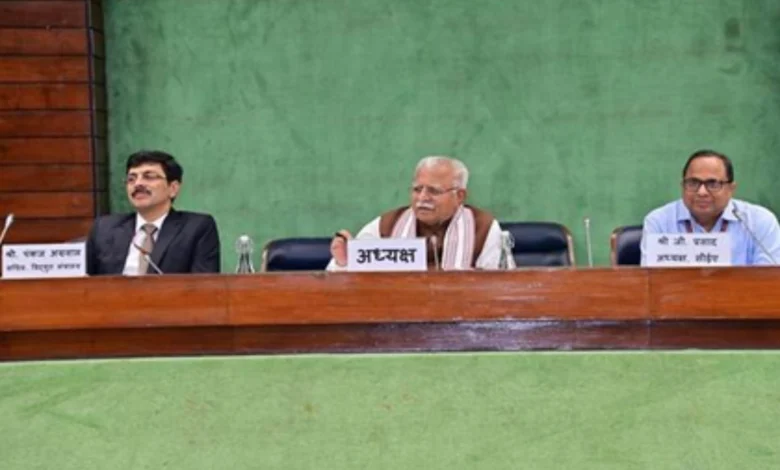Power Sector Key to Achieving ‘Viksit Bharat’ by 2047: Manohar Lal

Union Minister for Power and Housing and Urban Affairs, Manohar Lal, emphasized the importance of the power sector in achieving the vision of a developed India, or ‘Viksit Bharat,’ by 2047. Speaking at a meeting of the Parliamentary Consultative Committee for the Ministry on Friday, he highlighted that a strong and reliable transmission system is essential for the optimal use of the country’s power generation capacity.
National Electricity Plan: Key Targets
During the meeting, the minister discussed the National Electricity Plan (NEP), which outlines the country’s transmission requirements for the 2023-2032 period. This plan, prepared by the Central Electricity Authority (CEA), aims to enhance India’s electricity infrastructure to match the expected rise in power generation and demand over the next decade.
According to the NEP-Transmission, India plans to add:
- 1.91 lakh circuit kilometers (ckm) of transmission lines
- 1,274 Giga Volt Ampere (GVA) of transformation capacity by 2032
Focus on Modern Transmission and Cybersecurity
The meeting also addressed key issues, including the Right of Way (RoW) challenges, the adoption of new technologies in power transmission, and strengthening cybersecurity in the sector. Committee members provided several suggestions to improve power distribution and lauded the Ministry’s ongoing efforts to expand the country’s transmission network.
Manohar Lal directed ministry officials to consider the members’ recommendations and take necessary actions to ensure that public welfare remains the top priority.
Improved Power Supply in Rural and Urban Areas
Highlighting recent achievements, the minister noted that the average power supply in rural areas has significantly improved, increasing from 12.5 hours per day in 2014 to 22.6 hours per day in 2025. In urban areas, the average electricity supply has reached 23.4 hours per day this year.
Expansion in Power Generation Capacity
Manohar Lal shared data on the growth in India’s power generation capacity over the past decade:
- Fossil-based power capacity rose from 168 GW in 2014 to 246 GW in January 2025, marking a 46% increase.
- Non-fossil-based power capacity surged from 80 GW in 2014 to 220 GW by January 2025, reflecting an impressive 180% growth.
100% Household Electrification: The Next Goal
The minister reiterated the government’s commitment to achieving 100% household electrification across the country and making electricity accessible to everyone at all times. He stressed that reliable power supply and expanded infrastructure will play a crucial role in driving India’s economic growth and achieving the ‘Viksit Bharat’ vision by 2047.
